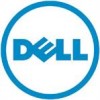Dell External OEMR 1435 User Guide - Page 135
Acronym for Challenge-Handshake Authentication Protocol, an authentication
 |
View all Dell External OEMR 1435 manuals
Add to My Manuals
Save this manual to your list of manuals |
Page 135 highlights
bootable diskette You can start your system from a diskette. To make a bootable diskette on a system running Windows, insert a diskette in the diskette drive, type sys a: at the command line prompt, and press . Use this bootable diskette if your system will not boot from the hard drive. bus An information pathway between the components of a system. Your system contains an expansion bus that allows the microprocessor to communicate with controllers for all the various peripheral devices connected to the system. Your system also contains an address bus and a data bus for communications between the microprocessor and RAM. byte Eight contiguous bits of information, the basic data unit used by your system. cache A fast storage area that keeps a copy of data or instructions for quicker data retrieval. For example, your system's BIOS may cache ROM code in faster RAM. Or, a disk-cache utility may reserve RAM in which to store frequently accessed information from your system's disk drives; when a program makes a request to a disk drive for data that is in the cache, the disk-cache utility can retrieve the data from RAM faster than from the disk drive. CD-ROM Abbreviation for compact disc read-only memory. CD drives use optical technology to read data from CDs. CDs are read-only storage devices; you cannot write new data to a CD with standard CD drives. CHAP Acronym for Challenge-Handshake Authentication Protocol, an authentication scheme used by PPP servers to validate the identity of the originator of the connection upon connection or any time later. CLI Abbreviation for command line interface. Glossary 135















